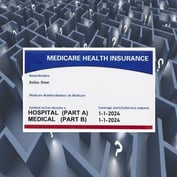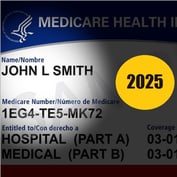New Alphabet Soup Spells Opportunity For Creative Benefits Advisors
By
In 1973, Congress ushered in the Age of Managed Care by passing the Health Maintenance Organization Act. That bill also spawned the term HMO and a whole glossary of well-known acronyms for health plans.
Recent regulatory and legislative changes have generated yet another novel lexicon, and a new Consumer Era in health care, by introducing health reimbursement arrangements and health spending accounts.
Employers and benefits managers may be able to use HRAs, HSAs and the more traditional flexible spending accounts to lower benefits costs without reducing employees take-home pay.
The oldest of the 3 options, the FSA, is defined under Section 125 of the Internal Revenue Code. Employees usually fund FSAs using pretax dollars to pay for predictable health care costs, as described in IRC Section 213(d). Employers also gain from FSAs, because employee contributions l ower the payroll base and reduce payroll taxes.
ower the payroll base and reduce payroll taxes.
FSA rules are continuing to evolve. One recent regulatory change lets employees use FSAs to pay for over-the-counter drugs. But the tax code still imposes the infamous use it or lose it provision, which mandates forfeiture of unused funds at the end of the year. This provision may be the reason that fewer than 10% of eligible employees enroll in a typical FSA program, even though studies have shown that as many as 40% to 50% of employees who qualify would benefit from participating in the plan.
The second Consumer Era health account option is the HRA, defined by IRS Revenue Ruling 2002-41, IRS Notice 2002-45, and various other sections of the IRC. HRAs must be employer-funded and can be used only for allowable expenses, as stated in Section 213(d). Unused funds are rolled over into the following year.
HRAs are the most common form of consumer directed health plans. However, growth in HRAs has been modest, probably because the accounts are not portable and the government requires that employers provide all funding.
The third Consumer Era health account option is the new HSA, a portable creation of the recently passed Medicare Prescription Drug, Improvement and Modernization Act of 2003.
Unlike funds in an FSA, unspent balances in an HSA are rolled over at the end of the year. Account holders can invest the funds in a trust that grows with interest. In addition, HSA funding options are more flexible than HRA funding options, because contributions can come from employees, employers or both.
One requirement that may limit use of the HSA is the provision that it only can be used with a medical plan with an individual deductible of $1,000 minimum and a family deductible of at least $2,000.
Combining FSAs, HRAs, HSAs and health insurance can create new benefit options. One popular strategy is to utilize a lean, high-deductible health plan with an HRA program that employees can use to defray some of the cost of the deductible. The addition of HSAs creates a number of new combinations that are worth exploring.








 February 05, 2004 at 07:00 PM
February 05, 2004 at 07:00 PM










